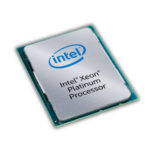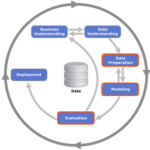“While MPI was originally developed for general purpose CPUs and is widely used in the HPC space in this capacity, MPI applications can also be developed and then deployed with the Intel Xeon Phi Processor. With the understanding of the algorithms that are used for a specific application, tremendous performance can be achieved by using a combination of OpenMP and MPI.”
Moving Toward the Cloud & Seamless HPC
This is the fifth and final entry in an insideHPC series that explores the HPC transition to the cloud and how this move can help create seamless HPC. This series, compiled in a complete Guide, covers cloud computing for HPC, why the OS is important, OpenStack fundamentals and more.
Feed The Cores – Memory Bandwidth Usage
“Memory bandwidth to the CPUs has always been important. There were typically CPU cores that would wait for the data (if not in cache) from main memory. However, with the advanced capabilities of the Intel Xeon Phi processor, there are new concepts to understand and take advantage of.”
Speeding Up Big Data Analysis With Intel MKL and Intel DAAL
“New algorithms that can query massive amounts of data an draw conclusions have been developed, but these algorithms need to be optimized on the underlying hardware. This is where the expertise of vendors who develop the hardware can add tremendous value. Optimizing the underlying libraries that can execute with a high degree of parallelism will definitely lead to improved performance for the software and productivity gains for the organization.”
Cycles Per Instruction – Why it matters
To compare how one version of a part of the code is running to another version, since this is a ratio, it is important to keep one of the values constant in order to understand if the optimization is working. If more cpu cycles are being used, but more instructions are being executed, then the ratio could be the same, but this measure will not show any improvement. The goal is to lower the CPI in certain parts of the code as well as the overall application.
Performance Gains Using Libraries
In many cases, applications that perform various simulations use some of the same math functions that many other applications use. Rather than each developer recoding the same math functions over and over, libraries, developed by experts can significantly speed up execution of the overall application. Since there can be many optimizations that experts who understand many of the nuances of the hardware would understand, it is important that developers be familiar with various libraries that are made available for HPC types of applications.
Vectorization with AVX-512 Intrinsics
“With the Intel compilers, intrinsics are recognized and the instructions are generated in-line which is a tremendous advantage. Since the Intel Xeon Phi processor when using the AVX-512 intrinsics can perform a tremendous number of floating point operations per second, it is beneficial to use intrinsics for certain math computations. To use intrinsics, all that is needed is the proper header file and then to call the desired intrinsic function.”
Considerations for Applications to Transition to a Cloud
This is the third entry in an insideHPC series that explores the HPC transition to the cloud, and what your business needs to know about this evolution. This series, compiled in a complete Guide, covers cloud computing for HPC, considerations for applications to transition to the cloud, IaaS components, OpenStack fundamentals and more.
The HPC Transition to the Cloud
This is the first entry in an insideHPC series that explores the HPC transition to the cloud, and what your business needs to know about this evolution. Compiled in a complete Guide, we cover cloud computing, industry examples, IaaS components, OpenStack fundamentals, and more.
Jump Start your Immersive Video Experiences
“With a wide range of Intel Xeon processors available, a truly immersive video experience can be delivered to a diverse set of end users who enjoy watching a concert or sporting event from wherever they may be located. While not an immersive VR experience, immersive video where the user has control over the viewing angle is a very important technology that can deliver exciting content to many consumers.”









